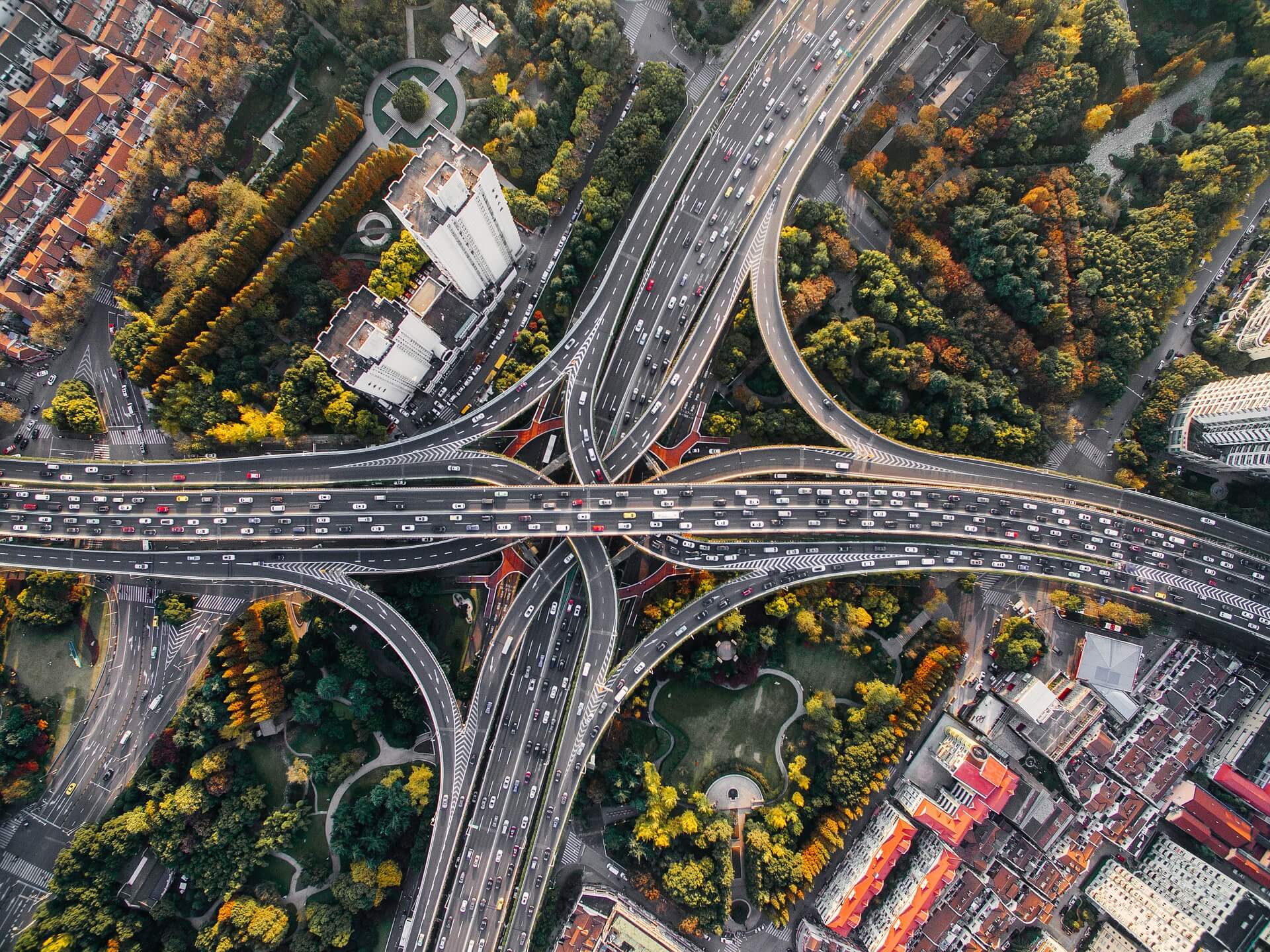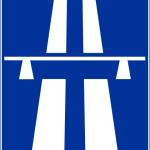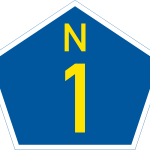Highways are an increasingly common element of the landscape. Admittedly, we complain that there are too few of them, that drivers cannot drive them, that they are too expensive. However, everyone appreciates halving the travel time for vacations, greater safety than on regular roads, and no speed cameras. Let’s look at highways from a geographical point of view.
What is a highway
The name highway comes from the Italian car (car) and strada (road). There are several definitions – encyclopedic or included in the highway codes of each state. In all, however, there are common features:
- express way road with restricted entry for pedestrians and slow vehicles (sledges, agricultural vehicles, etc.)
- high technical parameters
- two roads with a minimum of two lanes each
- roadways are permanently isolated from each other – barriers, green belt
- other roads connect in a collision-free way using „snails” and switching lanes, often also roundabouts at entrances and exits
Add to this the ban on stopping outside emergency lanes, the infrastructure (rest and service area (RSA), toll booths and noise barriers suppressing noise for local residents. Highways must also be marked.
Advantages and disadvantages of highways in road transport
Like any solution, highways have pros and cons. In general, there are more pluses, which only confirms the rapid development of this type of road around the world.
- + transit goes outside the city centre, smaller traffic jams in cities, less noise
- + faster speed and passage speed
- + reduced energy consumption (lower fuel consumption when driving evenly without braking or rapid acceleration, no starting)
- + greater security (no collision junctions)
- – high construction costs
- – high maintenance costs
- – toll sections or entire motorways
Freight road transport is usually more expensive than rail, but more flexible („door to door”). Motorways reduce costs and increase travel speed. The same is true for passenger journeys. Who stood 10 hours in the field on a siding in the winter will certainly confirm this. 🙂
Safety is another issue. Although the speeds developed on highways are much higher, but there are no intersections on them, etc. Depending on the driving culture (e.g. leaving the right distance between cars, not breaking the left lane) and the condition of roads, the number of accidents varies, but still much less than on national roads.

The development of highways in Europe over the years
The motorway already has over 100 years of history. The first of this type began to be built before the First World War and was completed in 1921. As you can guess, it was not available for road traffic – it served Berlin scientists and athletes. The average European citizen could go on the highway for the first time in Italy in 1924, and North America in 1925 from the Bronx.
As you correctly guessed, Adolf Hitler was a pioneer in the construction of highways. In the 1930s, he built the entire autobahn system, eliminating unemployment and preparing for war. It was the first comprehensive road network, not individual sections connecting two cities. By 1943, the Nazis commissioned almost 4,000 km of highways. At present, only four European countries have more (Spain, Germany, France and Italy)!
After World War II, there was a rapid reconstruction, at least in Western Europe, taking into account the transport network. In the Eastern Bloc, railways still reigned. The effects of this approach were visible even after the collapse of the USSR. In 2002, Latvia, Belarus, Moldova, Macedonia and Albania did not have a kilometre of motorways, while their density in other countries ranged from 1.2 km / 100 km2 in the Czech Republic to 0.1 km / 100 km2 in Ukraine and Russia. For comparison, Portugal and Iceland had 2.4 km / 100 km2 and the Benelux countries above 4.8 km / 100 km2.
And other statistics – the length of highways in kilometres in 1999 and in the 21st century:
- USA – 93 500 -> 77 556 (2013 only interstate)
- Japan – 7,300 -> 8050 (2012)
- France – 9,400 -> 11,612 (2017)
- Australia – 1 500
- Canada – 17,800
- Italy – 6,800 -> 6,943 (2017)
- Germany – 11,600 -> 15,306 (2017)
- Poland – 400 -> 1,639 (2017)
- Belgium – 1,800 -> 1,763 (2017)
- China – 0 (1988) -> 12,409 (2012) -> 131,000 (2017)

European highways – tolls
The high costs of investment and subsequent maintenance of roads, if not used publicly, have led many countries (or investors/tenants etc.) to charge tolls. Two ticket payment systems have been adopted – in the form of a section at collection points (including via toll) and a flat vignette fee. Which is better? It all depends on the number of kilometres travelled in a given country. For occasional and transit routes, section fees are better from the point of view of drivers, and vignettes for regular transport.

An interesting example is two countries – Portugal and Norway. In Portugal, we can decide whether we want a vignette or a section ticket. And in the Viking country, despite free highways, it is better to stock up on a certain amount of money, because some accession roads are paid.
Speed limits on motorways in Europe
On the highway, we definitely move much faster than on the usual road. However, we still have a speed limit. When going abroad, it’s worth checking the limits and avoiding explaining to possible police patrols.

Looking at the map of Europe, some will rub their hands and go to Germany to check the maximum performance of their car. And here is a surprise. There is no official limit, but the suggested maximum speed is 130 km / h. If we had an accident at a higher speed, we will be complicit in the event (regardless of the circumstances), and many insurance companies will not want to pay compensation. It may be better in Poland – 140 km / h …
In some countries, you need to adapt the speed to the weather or terrain. On the iconography, you have the example of France and Lithuania. Add to the list Finland (80, 100 or 120 km / h depending on the section) and Luxembourg (110 km / h in the rain and 130 km / h if the surface is dry).

Trivia about highways
Highway signage
European countries have a fairly uniform highway marking system. The stamp shows two lanes with a bridge over them. The differences are mainly in the background colours – some use blue (e.g. Poland, Belarus, most of Western Europe, Norway), and some green (Scandinavia except Norway, most of Europe Eastern and Southern, Italy). Going abroad a little further, we will see similar signs, e.g. in Argentina, Bolivia, Chile, Israel or Pakistan. Examples are:
The longest motorways
The longest motorways are continental and intercontinental roads. They are often contractual routes, running continuously through many countries and having their own numbering in each. It should also be taken into account that sometimes the highway is only by name, e.g. in Australia or Asia.
- Pan-American Highway, Carretera Panamericana – Canada through the Americas to Tierra del Fuego – 48,000 km
- Asian Highway – from Japan, through China, India, Afghanistan to the Bosphorus – 120 557 km
- H1 – highway around Australia – 14,500 km
- Trans-Siberian Highway – Russia – 11,000 km in 7 sections
- E40 – connects Kazakhstan with France – almost 8,500 km long
- Trans-Canadian Highway – Canada – 8,030 km

* In the article I used, with the consent of Oponeo.pl, their iconographies. They are protected by copyright. A full description of the infographics can be found at https://www.oponeo.pl/artykul/autostrady
























0 Comments for “Road transport – highways”